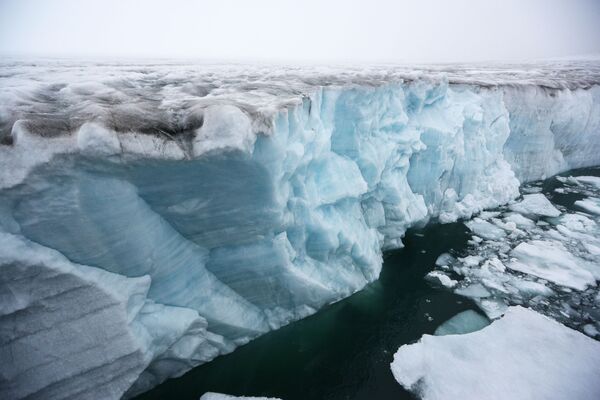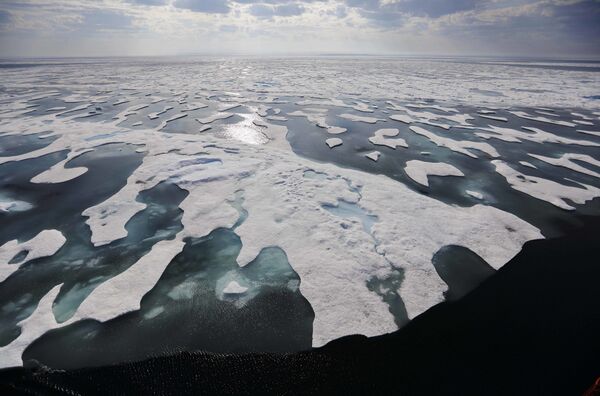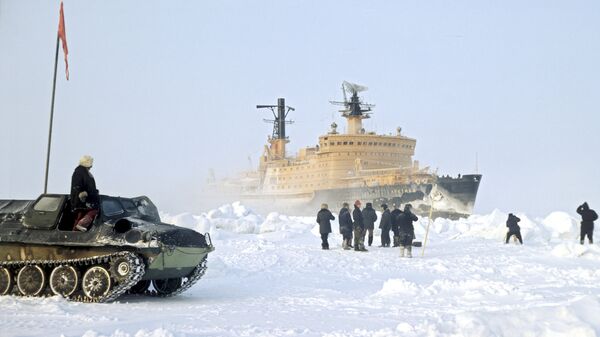Sputnik: What are the advantages and risks of economic development of the Arctic? Will it affect the Earth's climate?
Victor Gennadinik: I must say that the development of the Arctic and, first of all, the north of western Siberia is inevitable, since this region is the most accessible out of those that are not yet included in the modern global economy. Moreover, the climate cycle is currently in a period of warming, therefore the Arctic has become more accessible.
Environmental risks are always present since it's difficult to foresee all the effects of economic activities. However, I'm sure that in the context of public control and close attention to the North on the part of international ecologists, as well as state intelligence, it's difficult to expect global problems and irreparable errors.
In general, we should understand that the environmental efficiency of oil and gas companies, for example, is much higher than that of traditional nature management; that is, per unit of production, reindeer herders or fishermen affect nature much more strongly than oil workers.

Sputnik: Your study recorded an increase in river flows in the Arctic. What is the reason for this phenomenon?
Victor Gennadinik: The increase in the winter-spring river flow may be due to an increase in soil nutrition as a result of permafrost degradation. There has been an abnormal increase in river flow (1.5–2 times) from February to April, for example, in the lower Lena, both at the end of the past and in this century.
In our study, we used long-term data from Roshydromet, R-ArcticNET, and the Arctic Great Rivers Observatory Project. We've developed a mathematical model taking into account the permafrost typification and reflecting the dependence of the river flow on cryological conditions, as well as showing accelerated degradation of island permafrost and the growing proportion of sporadic permafrost.
Sputnik: What is the extent of permafrost thawing? What climate threats does it pose?
Victor Gennadinik: Permafrost degradation is an obvious process, the speed of which, however, is difficult to estimate reliably. Ice has a tremendous heat capacity and fusion heat, so it's extremely unlikely that we or our descendants will see the permafrost disappear completely.
The cold accumulated in the Arctic and Antarctic is a stabiliser of the global climate, a damper of temperature fluctuations. The fact that for millions of years there have been almost the same temperature conditions on Earth that allow living things to develop is a consequence of the presence of large ice reserves on the surface of the planet.
Permafrost degradation leads to the destruction of methane traps as well as to methane emissions. Methane is an extremely dangerous greenhouse gas; its contribution to the greenhouse effect is estimated at 4–9%, and it’s growing every year. The nature of atmospheric methane is diverse: apparently, there's less gas formed due to methane emissions from permafrost than from the intestines of cows and other ruminants.
Sputnik: How do you assess the economic prospects of methane production from permafrost hydrates?
Victor Gennadinik: China, Japan, Norway, India, and South Korea are developing methane extraction technologies from gas hydrates not from permafrost, but from the ocean floor. The methane obtained is still too expensive and doesn't withstand competition with methane produced by traditional methods.
There's a popular theory of a "methane hydrate gun", according to which the decomposition of gas hydrates during global warming results in a further temperature rise, which leads to an acceleration of hydrate decomposition and so on – to temperatures that are dangerous for all living things. If we manage to create effective technologies to extract methane from gas hydrates, this gun will be discharged.

Sputnik: What risks do industries and settlements that are in the permafrost zone face?
Victor Gennadinik: The permafrost, which has turned out to be not so permanent, made it possible to build heavy structures on "ventilated foundations" – piles based on frozen soils that are frozen even in summer. With climate warming, in many cases, the depth of seasonal thawing has increased so much that the frozen support ceased to exist.
Monitoring systems help fight against the destruction of foundations. These systems are developed and implemented, for example, on the Yamal Peninsula. These are sensors that transmit real-time temperature data near the piles.
Studying the mechanical properties of the soil makes it possible to make reliable predictions in terms of stability and prevent possible dangers. If there's a need to strengthen the foundation, we have to artificially freeze the soil under the structures. For this, thermostabilising systems of various designs are used.
Sputnik: In your opinion, is global warming doing more harm or good?
Victor Gennadinik: According to modern concepts, animals appeared on Earth about 600 million years ago. During this period, the average temperature of the Earth was almost always much higher than it is now: by five degrees on average, and by 15 degrees at peak times. Therefore, the question of what climate is natural for life on Earth remains open. It's unlikely that it is the climate of the mid-20th century.
Undoubtedly, rapid changes in the climate system lead to an imbalance, an increase in natural disasters, and unusual natural phenomena. Whether it happens or not, we’d better be prepared.

